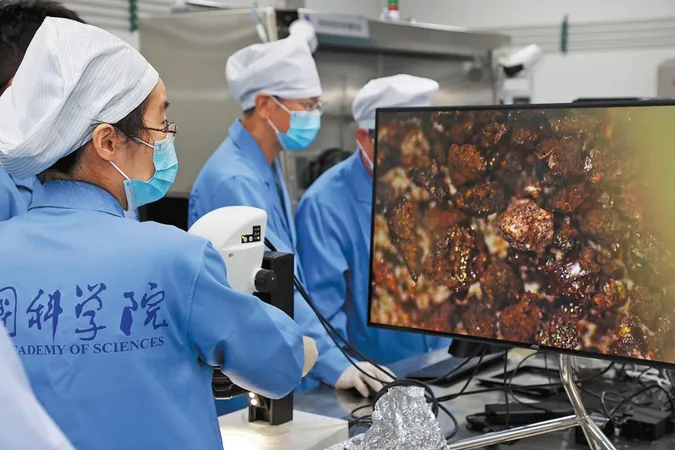
Tragic Death of Cambodian Man Linked to H5N1 Avian Flu: Are Sick Chickens to Blame?
2025-01-10
Author: Liam
Tragic Death of Cambodian Man Linked to H5N1 Avian Flu: Are Sick Chickens to Blame?
A Cambodian man has reportedly died from H5N1 avian flu, raising serious concerns as investigations suggest that he may have contracted the virus after consuming sick chickens. This unfortunate incident highlights an alarming uptick in H5N1 cases, as public health officials scramble to control the spread of this deadly strain of avian influenza.
Recent Developments in H5N1 Cases
In recent developments, the US Department of Agriculture’s Animal and Plant Health Inspection Service (APHIS) confirmed several new cases of H5N1 in poultry across multiple states. This includes a second outbreak at a commercial broiler farm in Kent County, Delaware. Additionally, a backyard farm in Oakland County, Michigan, with over 100 birds, has also encountered an outbreak.
State-Specific H5N1 Outbreaks
Missouri reported its own H5N1 case, involving a small backyard farm with 20 birds, reflecting a worrying pattern of infections in domesticated birds. Meanwhile, California has seen a surge in cases, with a recent detection in dairy cattle bringing the state's total to an astonishing 707 cases since late August 2023.
CDC Response and Safety Guidelines
In response to the increasing threat of H5N1, the Centers for Disease Control and Prevention (CDC) has updated its interim guidance to protect workers in various animal settings, including zoos and sanctuaries. The revised guidance is aimed at minimizing exposure to influenza A viruses, emphasizing the importance of safety protocols in environments where humans come into contact with birds and other animals.
Emerging Cases and Challenges
Furthermore, preliminary tests in Maryland have indicated the presence of the avian flu at a broiler operation in Caroline County—marking the state's first commercial poultry outbreak since 2023 and adding to the concerns in the Delmarva region, which has recently seen rising rates of H5N1.
Public Vigilance and Preventive Measures
It is crucial for the public, especially those involved in poultry farming or consumption, to remain vigilant. As H5N1 continues to spread, the risk of zoonotic transmission—transmission of diseases from animals to humans—becomes more pressing. People are being advised not to consume poultry or eggs that appear sick or have been raised under questionable conditions.
Broader Health Implications
This resurgence of H5N1 comes at a time when questions about agricultural practices, biosecurity measures, and food safety are paramount. Health authorities everywhere are urging individuals to stay informed and report any unusual wildlife deaths or sick animals in their communities to help control the spread of this potent virus.
Global Health Context
Meanwhile, related health warnings are also emerging worldwide, as multiple nations report cases of circulating vaccine-derived poliovirus, leading to renewed vaccination campaigns and public health initiatives aimed at preventing outbreaks.
Conclusion
As this situation unfolds, there is an urgent need for continued monitoring and effective response strategies to safeguard both human health and agricultural integrity. Could this serve as a wake-up call for better preventive measures in how we handle poultry and other potentially infected animals? Only time will tell.









 Brasil (PT)
Brasil (PT)
 Canada (EN)
Canada (EN)
 Chile (ES)
Chile (ES)
 Česko (CS)
Česko (CS)
 대한민국 (KO)
대한민국 (KO)
 España (ES)
España (ES)
 France (FR)
France (FR)
 Hong Kong (EN)
Hong Kong (EN)
 Italia (IT)
Italia (IT)
 日本 (JA)
日本 (JA)
 Magyarország (HU)
Magyarország (HU)
 Norge (NO)
Norge (NO)
 Polska (PL)
Polska (PL)
 Schweiz (DE)
Schweiz (DE)
 Singapore (EN)
Singapore (EN)
 Sverige (SV)
Sverige (SV)
 Suomi (FI)
Suomi (FI)
 Türkiye (TR)
Türkiye (TR)
 الإمارات العربية المتحدة (AR)
الإمارات العربية المتحدة (AR)